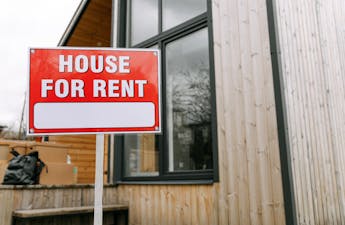In our previous episodes, we talked about choosing a rental and getting it set up. In this installment of our Landlording A-Z series, we’ll discuss advertising and filling vacancies, showing your rental, and applications. Below is a brief rundown. See the complete episode for more information.
Develop Your Advertising
Photos and Videos
Make sure you have great photos, as people won’t read your description unless the photos have caught their eye. Experiment to get the best lighting and set clutter aside. Consider having professional photos and videos taken.
Write Compelling Headlines and Descriptions
Emphasize features that stand out. Do you have a dishwasher? Laundry? Storage? Parking?
You should also highlight the strength of the location. What is it nearby and what is there to do? What is public transportation like? Give some landmarks people are likely to know, to give them familiarity.
Make It Feel Personal
It’s also very valuable to make your listings personal to give them a sense of what their life would be like if they lived there. Give readers a feel for the property with thoughtful descriptions. For example, “Updated vintage building,” “Central to the ……. Neighborhood.” You can mention things like if it’s a family-run property or if the neighboring tenants are considerate and long-term.
You should also give examples of activities or features that are nearby. Make sure to list all amenities in an easy-to-scan fashion, such as bullet points. Always include information on:
- Parking
- Utilities
- Laundry
- Outdoor space
- Storage
Specify Terms
Specify all terms in a clear, concise section. We handled setting rental terms in the last episode. Make sure to include:
- Pet policy
- Deposits and fees
- Rental terms
List On As Many Major Platforms As Possible
When creating your listing, make sure to list on as many of the major platforms as possible. For example:
- Zillow
- Craigslist
- Zumper
- Padmapper
- Apartments.com
- Facebook Marketplace
We use property management software platforms that syndicate to multiple sites, such as TurboTenant, Avail, and Hemlane.
Prescreening
Prescreening is a really valuable discipline. Once getting interest from someone, one of the first things we do is ask them a few questions. This includes:
- Do you smoke or vape in any form?
- Do you have any animals?
- Do you make at least two and a half times the monthly rent after any large payments?
- When do you want to move?
This immediately takes care of a lot of the big factors that could determine whether or not you would like to carry on with the process, saving a ton of time.
![]() Also Read: Best Pre-Screening Questions Landlords Should Ask Potential Tenants
Also Read: Best Pre-Screening Questions Landlords Should Ask Potential Tenants
Showings
Some property management software have the ability to let the applicant pre-book a showing time. You can set your availability and they’re able to select the time that works best. This can also save time and prevent issues, such as double booking.
Nowadays, there are many ways that you can show your rental property. You can do virtual, self-guided, or in-person tours. One thing that we emphasize is not renting the site unseen.
Applications
In the past, paper applications were typically utilized. However, now you’re able to do it through tenant screening software, such as RentPrep, or property management software that will handle this. Some software will allow you to customize your questions, but most of them have a standard set of questions. Such software will also handle checking identification and payments for the screening report.
Takeaway
Crafting strong rental ads brings the largest number of interested renters and ensures that they have a clear idea of what the property is like. The terms of the rental should also be included so that they know what they are getting into. The prescreening process helps to eliminate renters who are not a fit by confirming important criteria right up front, as soon as they express interest. Nowadays, there are many options for showing rentals, which is a crucial step before proceeding with the application process.

Landlording A-Z Series:
Our Landlording A-Z series will walk you through each of the stages, tasks, and issues involved in rental real estate investing. In our next installment, we will discuss the tenant screening process.




